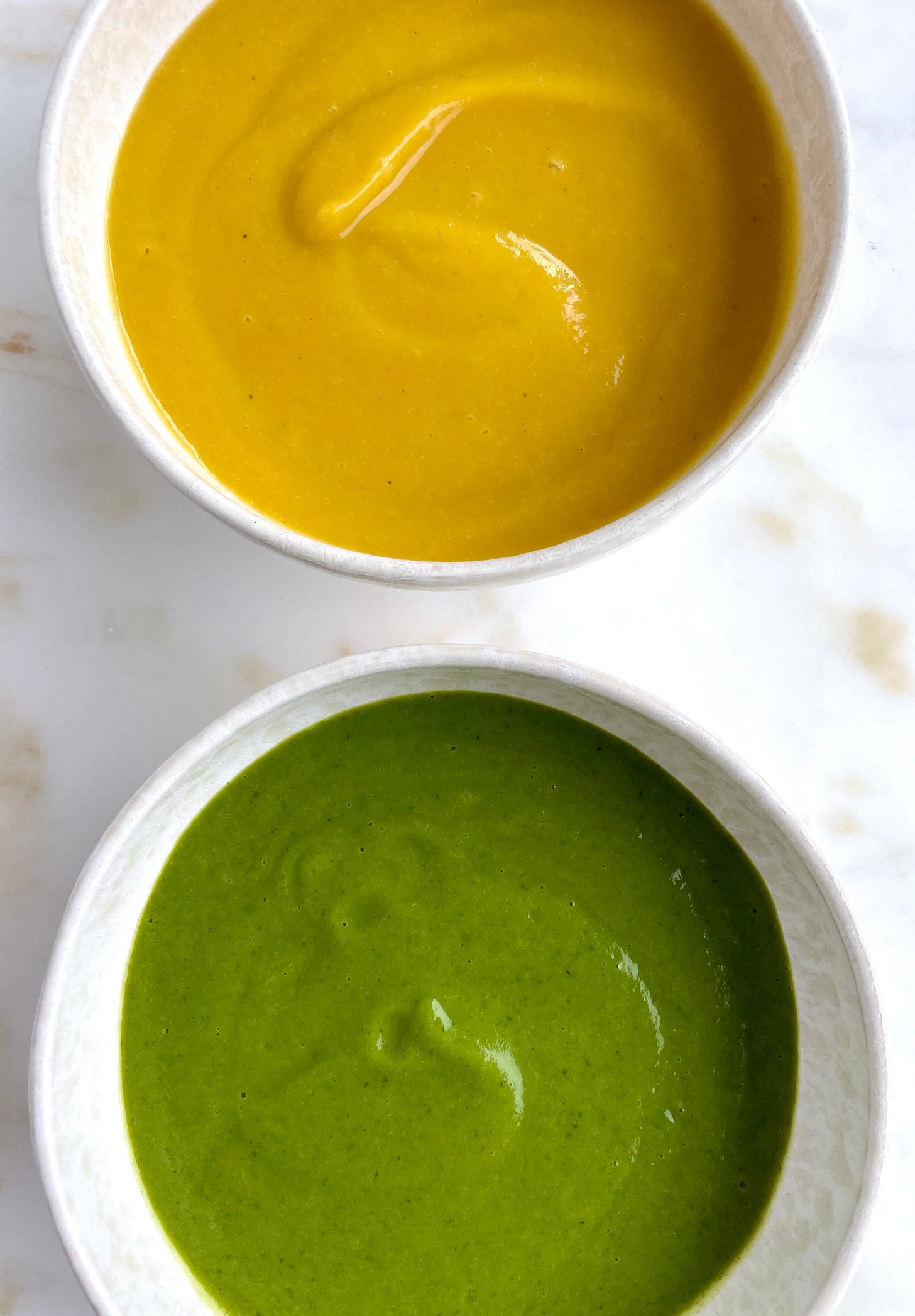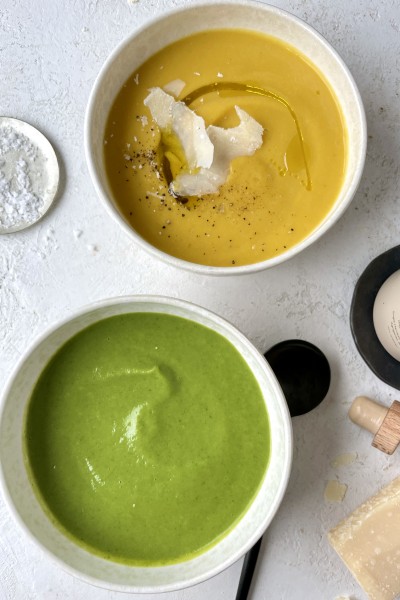Hello, and welcome to the 100th edition of Susanality! I’m so excited to celebrate this milestone with you. It’s been two years since I started this newsletter, and I’m so happy to see more and more of you signing up every week. Welcome to all of the new subscribers!
Cookie season was lots of fun, but, I have to admit, I’m now paying the price if you know what I mean. I definitely gained a few pounds, and I’m not just renting them. As much as I love popping those warm, delicious cookies in my mouth, I’m ready to start eating a little cleaner for a while, reserving the sweets for an occasional treat. The leftover cookies are in the freezer. In the basement. Where I can’t get to them unless I decide that I really, really want one.
I’d like to learn to be more moderate about “tasting” while I develop recipes, but it’s hard when you’re alone in the kitchen with all those yummy smells and freshly baked cookies. I do think it’s important to taste and enjoy my recipes before I share them with you, and feel that eating a whole cookie is necessary to get that full experience. But too often I have a second, then a third, and then…
This week I’m leaning on one of my favorite elixirs: creamy, yet creamless soups. These are easy to make and great to have on hand whether you’re trying to simplify your diet after a month of overindulging or not. Not only are soups like these great for quick lunches (I usually add a small sandwich or simply a piece of toast, depending on how hungry I am), but they are also handy for an afternoon sip. Since they are so creamy, I like to drink them from a mug as a satisfying snack to crush those afternoon sweets cravings and fill me up until dinner. Speaking of, you can also use these soups as the basis for a bigger meal. A few turkey meatballs plunked in and some generous shavings of Parmesan make it feel like a full (but light) meal.
You can make colorful, creamy soups like these without any recipe at all if you’re a good soup maker, but today I’m sharing not one, but two recipes for my current favorites, along with some rules of thumb if you want to go freestyle.
Here are the “no recipe” guidelines for any pureed vegetable soup:
Choose your aromatics. You can use onions, shallots, or leeks — or some combination of the three. I love the subtle flavor that leeks add, so try to use them if you can. A couple cloves of fresh garlic are always welcome. A few celery stalks or some fennel are good, and you might want a carrot or two to enhance the flavor of whatever your main vegetable is. That said, avoid carrots if the soup is going to be a pale color.
Don’t worry about the cuts of your vegetables too much since you’ll be pureeing it at the end. Garlic cloves can go in whole. More important is that veggies are cut into pieces that will cook in roughly the same amount of time.
You’ll sweat the aromatics until they are soft and translucent, about 10 minutes. I do this with the pot covered, to create more steam and prevent burning, opening the lid to stir occasionally. They shouldn't brown.
Choose your main vegetable(s). You can highlight a single vegetable or go for a mix of compatible ones, which will add depth. I usually add a potato to thicken the soup, unless I'm using winter squash, which is starchy enough on its own to do the job. Alternatively, you could add a handful of chickpeas, which will also add thickness and body.
Once the aromatics have softened, add the vegetables and then the liquid. I use water and a spoonful or two of Better than Bouillon. Be careful here not to add too much liquid or the soup will be too thin. You can always thin it out at the end. Add just enough liquid for the vegetables to be poking out of the top. Don’t cover them completely.
Add any herbs you want to use, or a Parmesan rind to add flavor.
Bring to a boil then simmer for 15 to 20 minutes, until all the vegetables are soft. Turn off the heat and stir occasionally to cool a bit, about 15 minutes.
Time to blend the soup. You can use an immersion blender right in the pot (remove any herb stems first). Make sure to keep the immersion blender immersed, or it will splash. This is a very convenient tool, and I use it often, but I do really like how smooth and velvety the soup gets when you use a high-speed blender like a Vitamix.
If using a blender, never fill it more than half full. Tilt the cap on the lid away from you and slightly open to let steam escape, and start on the lowest speed, gradually increasing to high speed until silky smooth.
Adjust the seasonings as needed. If serving right away, return to the pot and add water or stock (or milk or cream) to thin if needed. Reheat to desired serving temperature.
Serve it plain and simple or add any garnishes that you want. A dollop of sour cream or crème fraîche is nice, a drizzle of good olive oil, fresh soft herbs, shavings of Parmesan, something crunchy like nuts, seeds, or dukkah. Whatever you want!
Vegetables that are delicious in pureed soups:
Broccoli
Winter squash
Cauliflower
Celeriac (celery root)
Mushrooms
Celery
Carrot
Fennel
Zucchini
Kale
Corn
ICYMI
Since we’re celebrating the 100th edition of Susanality today, I thought I’d share one of the most popular posts from the past year — one that also happens to be perfect for any celebration. This is The Only Birthday Cake You’ll Ever Need, and I mean that! Keep this recipe on hand for the next time you’re the designated cake-maker for someone special.
If you have another favorite recipe from the Susanality archives, drop it in the comments! I love to hear what you all cook, and what resonates with the community here. Likewise, if you have any content requests for the coming year, let me hear them!
Eat Your Greens Soup
Makes about 3 ½ quarts
I love the smooth, creamy texture this soup gets from being pureed in the blender, but it’s also good pureed with an immersion blender, which will leave some nubbiness from the broccoli. Either way works! You can add any bits of green (or white) vegetables you have in the bin here, like a few leaves of kale, or a partial bunch of broccolini, or even cauliflower or romanesco.
1 tablespoon olive oil
1 to 2 leeks, thinly sliced and thoroughly washed (about 1 ½ cups)
1 medium onion, peeled and sliced
2 to 3 garlic cloves, peeled and lightly crushed
2 celery stalks, sliced
Kosher salt and freshly ground pepper
2 large broccoli crowns (about 2 pounds), roughly chopped
1 large zucchini (about 12 ounces), cut into small chunks
1 russet potato, peeled and sliced about 1/4-inch thick
6 to 7 cups of water (you may need more or less depending on the volume of your vegetables)
Spoonful of Better than Bouillon chicken or vegetable concentrate
4 to 5 cups baby spinach
Handful of dill or Italian parsley, optional
Heat a large soup pot over medium heat. Add oil, leeks, onion, garlic, and celery. Season lightly with salt and pepper. Cover and cook for 10-12 minutes, stirring occasionally. Reduce heat after a few minutes, or when the vegetables start to brown.
Add the broccoli, zucchini, and potato, enough liquid so that the vegetables are not quite covered, and a spoonful of Better than Bouillon. They should be poking out a little bit. Bring to a boil over high heat (this will take about 10 minutes) and reduce to a simmer. Cook partially covered until the vegetables are tender, 15 to 20 minutes.
Turn off the heat and let cool, stirring occasionally, for 10 to 15 minutes. Stir in the spinach and the herbs, if using, and let them wilt.
Use an immersion blender to blend the soup right in the pot, or, for a smoother, velvety texture, puree in batches in a high-speed blender (never fill the blender more than halfway).
Return to the pot if serving right away, and reheat to serving temperature. Add water or stock (or milk or cream if desired) to thin slightly if needed. Adjust seasonings to taste if needed and serve. Otherwise, pour into storage containers and chill until needed.
Velvety Butternut and Cauliflower Soup
Makes about 3 quarts
I like to use the prepped and packaged squash because it’s so convenient, but of course you can use a whole squash too. You can peel it (or not) and seed it, and cut it into chunks. Use roughly the same amount and add the liquid accordingly. Orange cauliflower intensifies the color, but white works too!
1 tablespoon olive oil
1 to 2 leeks, thinly sliced and thoroughly washed (about 1 ½ cups)
1 medium onion, peeled and sliced
2 to 3 garlic cloves, peeled and lightly crushed
2 celery stalks, sliced
Kosher salt and freshly ground pepper
1 (20-ounce) package cubed butternut squash (or a 1.5-pound squash peeled, seeded, and roughly chopped)
1 small head cauliflower (about 1 pound trimmed), roughly chopped
Small handful of sage or rosemary leaves, or a few springs of thyme
Parmesan rind, optional
5 to 6 cups of water (you may need more or less depending on the volume of your vegetables)
Spoonful of Better than Bouillon chicken or vegetable concentrate
Heat a large soup pot over medium heat. Add oil, leeks, onion, garlic, and celery. Season lightly with salt and pepper. Cover and cook for 10-12 minutes, stirring occasionally. Reduce heat after a few minutes, or when the vegetables start to brown.
Add the squash, cauliflower, herbs, enough liquid so that the vegetables are not quite covered, and a spoonful of Better than Bouillon. They should be poking out a little bit. Bring to a boil over high heat (this will take about 10 minutes) and reduce to a simmer. Cook partially covered until the vegetables are tender, 15 to 20 minutes.
Turn off the heat and let cool, stirring occasionally, for 10 to 15 minutes.
Use an immersion blender to blend the soup right in the pot, or, for a smoother, velvety texture, puree in batches in a high-speed blender (never fill the blender more than halfway).
Return to the pot if serving right away, and reheat to serving temperature. Add water or stock (or milk or cream if desired) to thin slightly if needed. Adjust seasonings to taste if needed and serve. Otherwise, pour into storage containers and chill until needed.
Edited by Molly Ramsey








Susan,
It's okay to gain weight, and it's even okay if you don't lose the weight. Enjoy the cookies and all the fruits of your labor.
Thank you for all of the thoughtful work you put into Susanality. Your soups are so timely! 100 posts--wow! I am inspired.